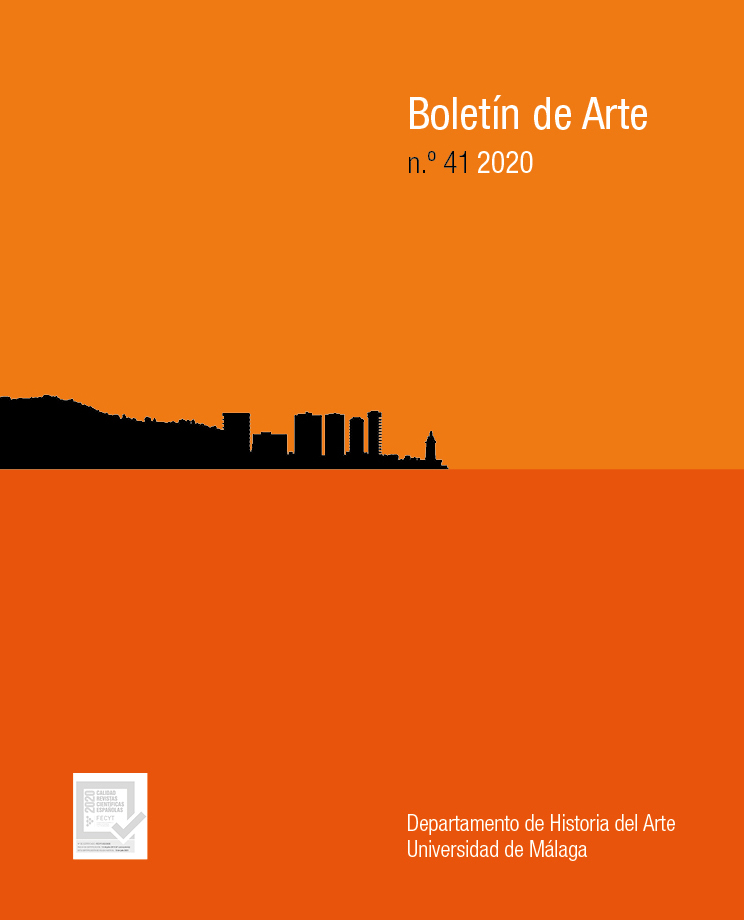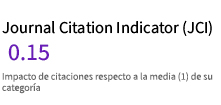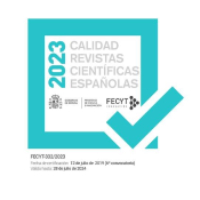Transcending Institutional Critique: Pepón Osorio’s Scene of The Crime (Whose Crime?) (1993)
DOI:
https://doi.org/10.24310/BoLArte.2020.v41i.8097Keywords:
Pepón Osorio, Institutional Critique, Latino, Whitney Biennial 1993, Kitsch, Installation art.Abstract
As part of the controversial 1993 Whitney Biennial, Puerto Rican artist Pepón Osorio recreated the interior of a Nuyorican home in his work Scene of the Crime (Whose Crime?). This paper aims to unpack the installation’s critical dimension, to argue that it goes beyond the mere institutional critique. To that end, I will first examine the particular disruption of the aseptic museum’s space prompted by Osorio’s installation. Secondly, I will analyze the artist’s intentional use of Kitsch as a gesture of cultural resistance: through the exaggerated accumulation of objects and imageries, Osorio deftly called into question the conventional systems of visibility that operate within the institutional realm.
Downloads
Metrics
References
BOURRIAUD, Nicolas (2002), Relational aesthetics, Les Presses du reel, Dijon.
BENÍTEZ, Marimar (2000), «The Museum and the Street», in Pepón Osorio: From Door to Door / Pepón Osorio: De Puerta en Puerta, EAP Press, San Juan.
CAMNITZER, Luis (1993), «The Whitney Biennial», Third Text, vol. 7, n.º 23, pp. 128-130.
FRASER, Andrea (2011), «An Artist Statement (1992)», in ALBERRO, A. and STIMSON, B. (eds.), Institutional Critique: An Anthology of Artists’ Writings, MIT Press, Cambridge, Massachusetts, pp. 318-329.
FOSTER, Hal, KRAUSS, Rosalind, KOLBOWSKI, Silvia, KWON, Miwon, and BUCHLOH, Benjamin (1993), «The Politics of the Signifier: A Conversation on the Whitney Biennial», October, n.º 66, pp. 3-27.
FUSCO, Coco (1995), English is broken here: Notes on cultural fusion in the Americas, New Press, New York.
GONZÁLEZ, Jennifer A. (2008), Subject to display: Reframing race in contemporary installation art, MIT Press, Cambridge, Massachusetts.
— (2013), Pepón Osorio, UCLA Chicano Studies Research Center Press, Los Angeles.
INDYCH, Anna (2001), «Nuyorican Baroque: Pepón Osorio’s Chucherías», Art Journal, vol. 60, n.º 1, pp. 72-83.
JONES, Kellie (1991), «Domestic Prayer / Oración Doméstica», in Con to’ los hierros: A retrospective of the work of Pepón Osorio, Museo del Barrio, New York, pp. 30-32.
KIMBALL, Roger (1993), «Of chocolate, lard, and politics», National Review, vol. 45, n.º 8, p. 54.
KITCHIN, Rob (1999), «Creating an Awareness of Others: Highlighting the Role of Space and Place», Geography, vol. 84, n.º 1, pp. 45-54.
KWON, Miwon (2002), One place after another: Site-specific art and locational identity, MIT Press, Cambridge, Massachusetts.
MERCER, Kobena (1990), «Black Art and the Burden of Representation», Third Text, vol. 4, n.º 10, pp. 61-78.
— (2016), Travel & See: Black diaspora art practices since the 1980s, Duke University Press, Durham.
MOSQUERA, Gerardo (1992), «The Marco Polo Syndrome: Some Problems around Art and Eurocentrism», Third Text, vol. 6, n.º 21, pp. 35-41.
NORIEGA, Chon A. (2013), «Foreword», in GONZÁLEZ, Jennifer, Pepón Osorio, UCLA Chicano Studies Research Center Press, Los Angeles.
OLALQUIAGA, Celeste (1996), «Holy Kitschen: Collecting Religious Junk from the Street», in MOSQUERA, Gerardo (ed.), Beyond the fantastic: Contemporary art criticism from Latin America, The Institute of International Visual Arts, London, pp. 270-288.
— (1998), The Artificial Kingdom: A Treasury of the Kitsch Experience, Pantheon Books, New York.
OSORIO, Pepón (1991), Con to’ los hierros: A retrospective of the work of Pepón Osorio, Museo del Barrio, New York.
— «Interview with Pepón Osorio. Scene of the Crime (Whose Crime?)». In: https://art21.org/read/pepon-osorio-scene-of-the-crime-whosecrime (date of access: 11-28-2019).
RAMOS, Liliana (2000), «Hollywood Kills. Performance of a do-it-yourself dialogue kit», in Pepón Osorio: From Door to Door / Pepón Osorio: De Puerta en Puerta, EAP Press, San Juan, pp. 68-83.
SCOTT, David (2005), «The Ethics of Stuart Hall», Small Axe: A Caribbean Journal of Criticism, vol. 9, n.º 1, pp. 1-16.
SUSSMAN, Elisabeth (2005), «Then and Now: Whitney Biennial 1993», Art Journal, vol. 64, n.º 1, pp. 74-79.
Downloads
Published
How to Cite
Issue
Section
License
Todos los contenidos publicados en la revista Boletín de Arte están sujetos a la licencia Creative Commons Reconocimento-NoComercia-Compartirigual 4.0 cuyo texto completo puede consultar en <http://creativecommons.org/licenses/by-nc-sa/4.0>

Los/as autores/as cuyas contribuciones sean aceptadas para su publicación en esta revista conservarán el derecho no exclusivo de utilizar sus contribuciones con fines académicos, de investigación y educativos, incluyendo el auto-archivo o depósito en repositorios de acceso abierto de cualquier tipo.
La edición electrónica de esta revista esta editada por la Editorial de la Universidad de Málaga (UmaEditorial), siendo necesario citar la procedencia en cualquier reproducción parcial o total.











4.png)
